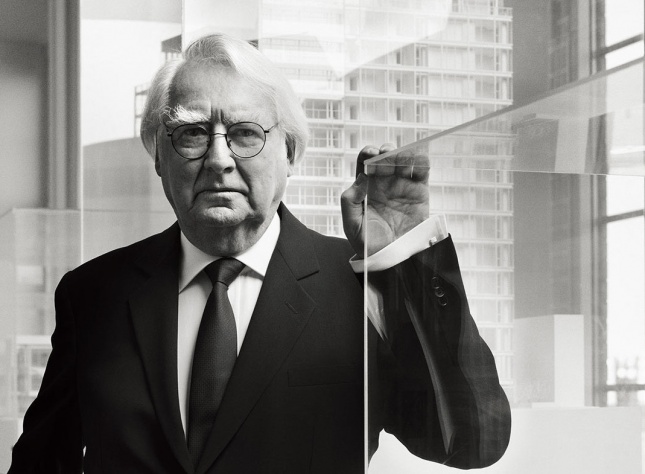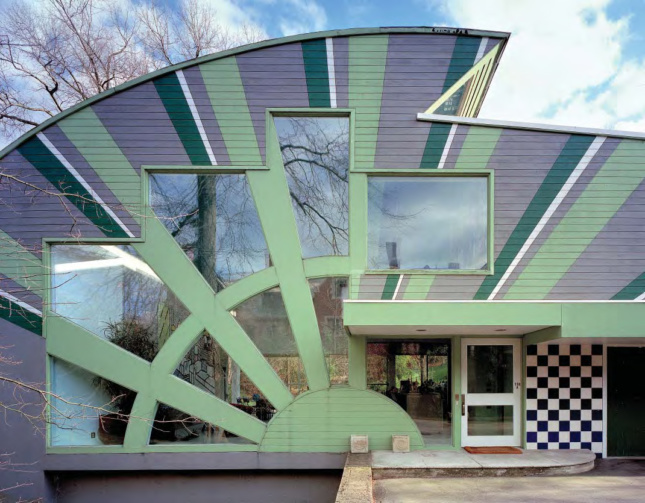2018 is nearly over, and the world of architecture wasn’t immune from the deluge of drama that swept over politics and pop culture. Take a look back at the wildest stories of the year, and relive some of the outrage as the New Year rolls in.
Richard Meier accused of sexual assault

After a stunning New York Times expose in March where multiple women detailed four decades of harassment at the hands of Richard Meier, the architect announced that he would be taking a six-month leave of absence from Richard Meier & Partners Architects. The backlash was swift, and the AIANY announced that they would be stripping the 2018 Design Awards from Meier as well as Peter Marino, who was facing his own set of sexual harassment allegations.
After Meier’s leave of absence ended in October, he announced that he would “step back from day-to-day activities” at the firm he founded in 1963. However, how involved Meier remains with the firm is still a matter of debate, as the studio announced that he “will remain available to colleagues and clients who seek his vast experience and counsel.”
#MeToo rocks the architecture world
After the revelations about Richard Meier went public, a debate over harassment and discrimination in the design world blew up. A Shitty Architecture Men list went live and detailed anonymous complaints about some of the biggest names on the architecture scene—before Google pulled the plug on the list over legal concerns. Still, the conversation around the gendered power dynamics typically present in architecture’s educational and professional track boiled over, and the AIA contiuned to address the topics at the AIA Conference on Architecture 2018.
In AN’s most outrage-inducing story of 2018, the Environmental Protection Agency (EPA) announced that asbestos was back on the menu for use in products on a case-by-case basis. The agency issued a SNUR (Significant New Use Rule) that meant the impacts of asbestos on the air and water no longer needed to be considered in its risk assessment (asbestos is a friable material and easily crumbles into carcinogenic fibers when broken). After a significant uproar online, including from Chelsea Clinton, the AIA called for a blanket ban on the material’s use.

Kanye West had an interesting summer. After returning to Twitter with a vengeance, ostensibly to promote his new album, West hung out with conservative commentators, took a trip to SCI-Arc’s Spring Show, declared that he would be launching an architecture studio called “Yeezy Home,” and revealed a collaboration with interior designer Axel Vervoordt. AN’s readers weren’t exactly thrilled at the news, but West did manage to at least release renderings of the studio’s first affordable housing prototypes. Unfortunately, West later deleted all of his past tweets and the fate of Yeezy Home, and the social housing project, is currently unknown.
When it was announced that Chase wanted to tear down and replace the 52-story former Union Carbide headquarters, questions abounded about when, why, and how. The 57-year-old tower was designed by Skidmore, Owings & Merrill (SOM), but much of the credit goes to SOM partner Natalie Griffin de Blois, and the news prompted a debate about her legacy in what was then a predominantly male field. Debate erupted online over whether the tower should be demolished and replaced with a Foster + Partners-designed alternative, and AN’s senior editor, Matt Shaw, penned an op-ed asking that New York not stymie progress for buildings that weren’t worth it.
The trials and tribulations of the AT&T Building

The saga of Philip Johnson and John Burgee’s postmodern Midtown skyscraper took yet another turn this year. In January, the lobby of the AT&T Building (or 550 Madison) was stealthily demolished. Then, in July, the Landmarks Preservation Commission (LPC) voted to landmark the building’s exterior, a definitive blow to the Snøhetta-designed renovation that would have glassed over the 110-foot-tall arch at the granite tower’s base. Unfortunately, owing to the work done earlier in the year, the lobby was no longer eligible for the same such protection. Then, ahead of the next round of LPC hearings, Snøhetta went back to the drawing board and released a much more sensitive scheme for restoring the tower that kept the arch, and the building’s imposing columns, intact.
The AIA speaks out against rolling back license requirements
Readers had an intense reaction to the AIA’s first Where We Stand statement of 2018. As the institute came out against an increasing trend of states rolling back license requirements for architects, readers were split. Would decreasing the barrier to entry increase competition, as the states claimed? Do architects really need to study for years and spend thousands of dollars in test materials to claim their certification? On the other hand, we expect doctors, lawyers, and practitioners in other highly-specialized fields to require licensing, so why should architecture be any different?
Patrik Schumacher takes Zaha Hadid’s fellow trustees to court
Patrik Schumacher drew scorn from the public after taking to London’s High Court in a bid to strip the other three executors of Dame Zaha Hadid’s will from her $90 million estate. Zaha’s niece, Rana Hadid, artist and friend Brian Clarke, and developer and current Pritzker Prize jury chairman Lord Peter Palumbo, released a joint statement decrying the move. Before Hadid’s death, she had chosen the four to disperse her estate through the Zaha Hadid Foundation, and the non-Schumacher executors claimed that Schumacher’s suit was for his personal financial gain. Schumacher responded, lamenting that his former friends and colleagues should have spoken with him first before going public with their grievances.
After a year of speculating, Amazon declared that it would be splitting up its HQ2 into two separate headquarters, dropping one in Long Island City, Queens, and the other in Crystal City, a suburb of Arlington, Virginia. The backlash against dropping a sprawling campus for 25,000 employees in New York’s already-overburdened waterfront neighborhood was swift, as city politicians and local residents criticized the $3 billion in subsidies the tech giant would receive, as well as the impact on the neighborhood.
Foster + Partners’ London Tulip pierces the skyline

The not-so-innocuously phallic Tulip tower in Central London made waves across the internet when it was revealed in November. Commentators and critics alike decried the 1,000-foot-tall observation tower, which balances a glass observation atrium atop a hollow concrete stem and would spring up next to the Gherkin. The icing on the cake is that the rotating pods on the outside of the glass bulb could be disruptive to the London City Airport’s radar system, meaning construction may have to wait until a full study is completed.
Venturi Scott Brown-designed house suffers secret demolition

When the purple-and-green, sunrise-evoking house designed by Robert Venturi and Denise Scott Brown in Shadyside, Pittsburgh, went on sale in June, it was hoped that a preservationist would save the building. The two-bed, two-and-a-half bath Abrams House was built in 1979 and was in great condition, but it soon came to light that the new owner only purchased the home so that he could tear it down. The buyer, Bill Snyder, also owns the Richard Meier-designed Giovannitti House next door and began a secret interior demolition which he claimed was necessary to preserve the landscape around the Meier building. After the news came to light, preservationists and colleagues of Venturi and Scott Brown rallied for the house’s protection.









